Table of Contents
Understanding the Mohs Scale of Hardness
Gemstones are among the most fascinating creations of nature. These precious and semi-precious stones come in various colors, cuts, and sizes that make them appealing to all.
However, not all gemstones are created equal when it comes to durability. is essential in determining how tough a gemstone is and how well it can withstand daily wear.
The Mohs hardness scale for gemstones is a qualitative measurement of a mineral’s resistance to scratching by another object. The scale ranges from 1 to 10, with 1 being the softest mineral and 10 being the hardest.
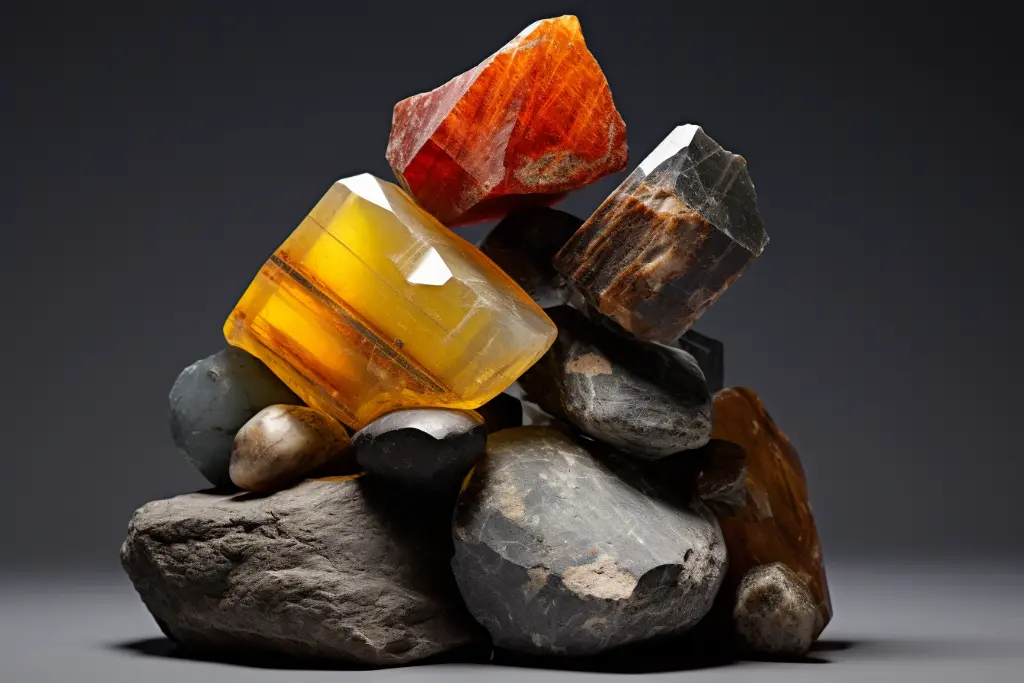
Gemstones at the low end of the Mohs scale like amber, carnelian, moonstone, and blue sandstone have a relatively low level of hardness and as such require extra attention when handling them so as not to scratch or damage them. On the other hand, gems like jade (6-7), alexandrite (8.5), zircon (7-7.5), sapphire (9) and emerald (7.5-8) have high levels of hardness making them highly durable for everyday wear but also more difficult to work with because they require specialized cutting equipment.
Understanding where your favorite gem sits on the Mohs scale can go a long way toward preserving its beauty over time. For example, Morganite has a rating between 7.5 – 8 on the Mohs scale making it suitable for engagement rings since they are worn on an everyday basis while Kunzite has a Mohs rating between 6 – 7 which makes it vulnerable to scratches if worn as an engagement ring every day without proper care measures in place such as regular cleaning using mild soap water or avoiding harsh chemicals that can cause damage over time.
| Mohs Hardness | Mineral | Common Examples |
|---|---|---|
| 1 | Talc | Talc powder, baby powder, bathroom soap |
| 2 | Gypsum | Plaster of Paris, drywall, alabaster |
| 3 | Calcite | Limestone, chalk, marble |
| 4 | Fluorite | Tooth enamel, fluoridated water |
| 5 | Apatite | Tooth enamel, bones, teeth |
| 6 | Orthoclase (Potassium feldspar) | Feldspar, granite |
| 7 | Quartz | Sand, quartz crystals, glass |
| 8 | Topaz | Gemstone, jewelry |
| 9 | Corundum | Ruby, sapphire, industrial abrasives |
| 10 | Diamond | Gemstone, industrial applications |
Softest Gemstones: Delicate Beauties
The softest gemstones on the Mohs scale of hardness are a delight to behold. They are delicate beauties that come in a range of colors and textures, from the translucent green of peridot to the cloudy blue of labradorite.
Although they may not be as durable as some other gemstones, they possess a unique beauty that is difficult to match. One such soft gemstone is opal.
It has a hardness rating of 5.5-6.5 on the Mohs scale, which means it can be easily scratched or damaged if not handled with care. However, its colorful play-of-light and ever-changing hues make it an irresistible choice for jewelry enthusiasts looking for something unusual and captivating.
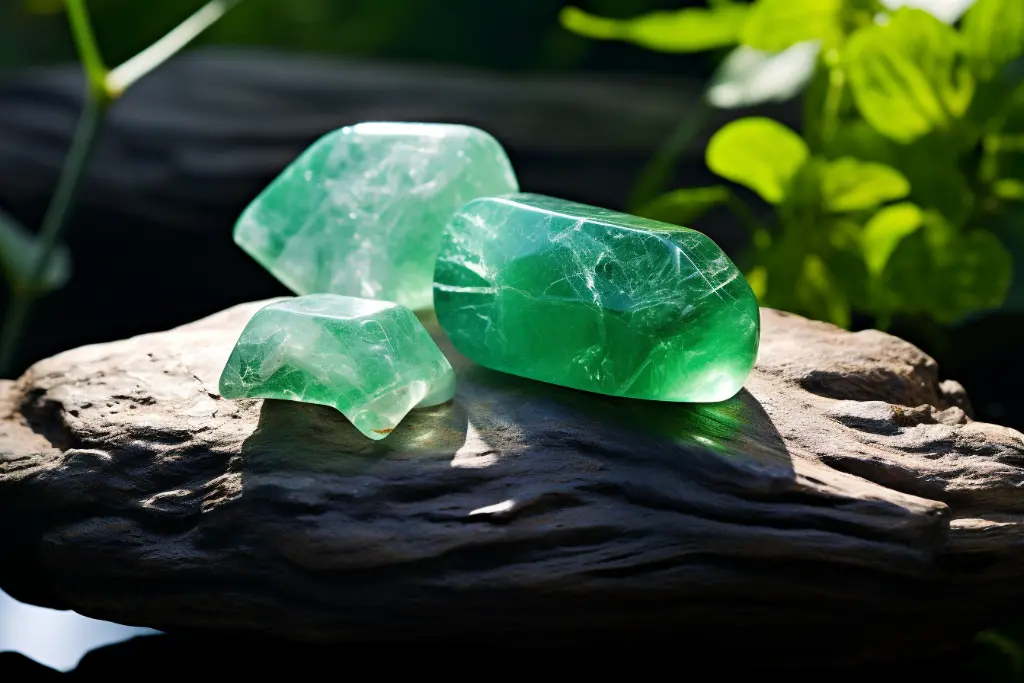
Another member of the soft gemstone club is jadeite. With a rating of 6-7 on the Mohs scale, it may be slightly harder than opal but still requires careful handling due to its brittle nature.
Jadeite comes in various colors ranging from pale green to deep emerald green and can also exhibit lustrous translucency when polished well. Morganite is another gorgeous gemstone with a rating of 7.5-8 on Mohs’ hardness scale that belongs in this category because it’s still relatively easy to scratch or damage during everyday wear if not treated gently enough.
Nonetheless, its pinkish hues and transparency make it highly prized by collectors who appreciate its gentle beauty. Even though these delicate beauties can be less durable than other gemstones, they continue to captivate our attention with their beauty and charm – as well as their exquisite uniqueness – making them some of the most sought-after stones for jewelers around the world today!
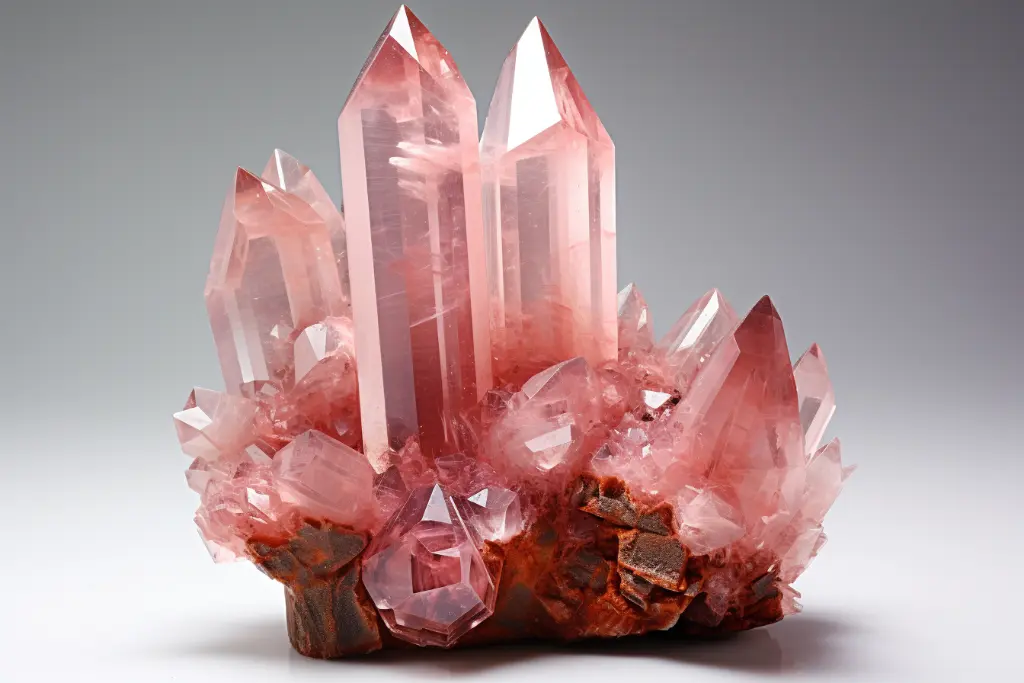
Gemstones with Moderate Hardness: Balance between Beauty and Durability
Gemstones with moderate hardness are an excellent choice when searching for the perfect balance between durability and beauty. These gemstones fall within the range of 5.5 to 7 on the Mohs hardness scale, making them sturdy enough for jewelry but still maintaining their delicate appeal.
Peridot is a beautiful green gemstone that ranks around 6.5 on the Mohs scale and is perfect for a piece of jewelry that can be worn every day. It has a lovely shimmer and can be set in silver or gold, making it a versatile addition to any collection.
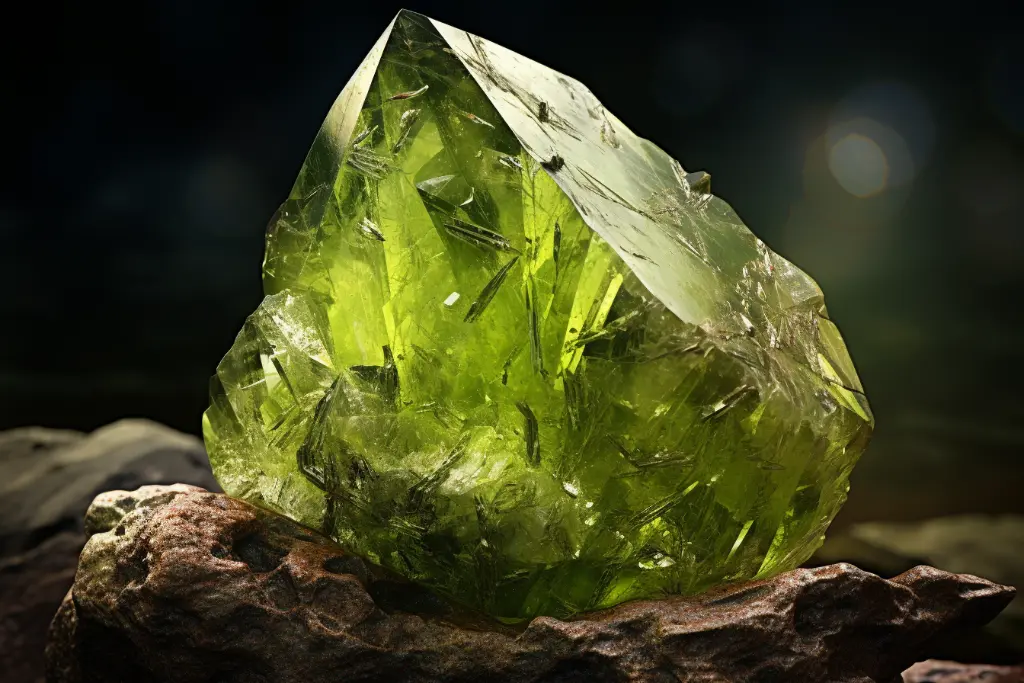
Another stunning gemstone with moderate hardness is tourmaline, which ranges from 7 to 7.5 on the Mohs scale depending on its variety. This colorful stone can range from green to pink, blue, or even black and is often used in engagement rings due to its durability and beauty.
Tsavorite garnet, which rates at about 7 on the Mohs scale, also falls within this category of moderate hardness gems and has become increasingly popular in recent years due to its bright green color and striking brilliance similar to emeralds on the Mohs scale. When it comes to selecting gems with moderate hardness such as alexandrite hardness mohs scale or jasper mohs scale for your jewelry collection, you’ll want to consider factors such as color, cut, and carat weight in addition to their durability rating.
Gemstones like the hematite Mohs scale may have a lower rating but still make great choices for pendants or earrings that won’t take too much wear and tear compared to rings worn daily like labradorite Mohs scale or carnelian Mohs scale that are more durable than most people assume at first glance. Ultimately, choosing a gemstone with moderate hardness will allow you to enjoy both elegance and sturdiness in your favorite pieces of jewelry!
Hardiest Gemstones: Unyielding Elegance
Gemstones with a hardness level of 8-10 on the Mohs scale are considered to be the hardest and most durable. These gemstones are perfect for everyday wear and tear, especially for those who lead an active lifestyle.
The hardiest gemstone in this category is the diamond, which ranks 10 on the Mohs scale. Diamonds do not scratch easily and are known for their brilliance, fire, and durability.
They make an excellent choice as center stones in engagement rings or as accent stones in jewelry pieces. Sapphire is another popular gemstone that ranks 9 on the Mohs scale; it is only slightly softer than diamond but still extremely durable.
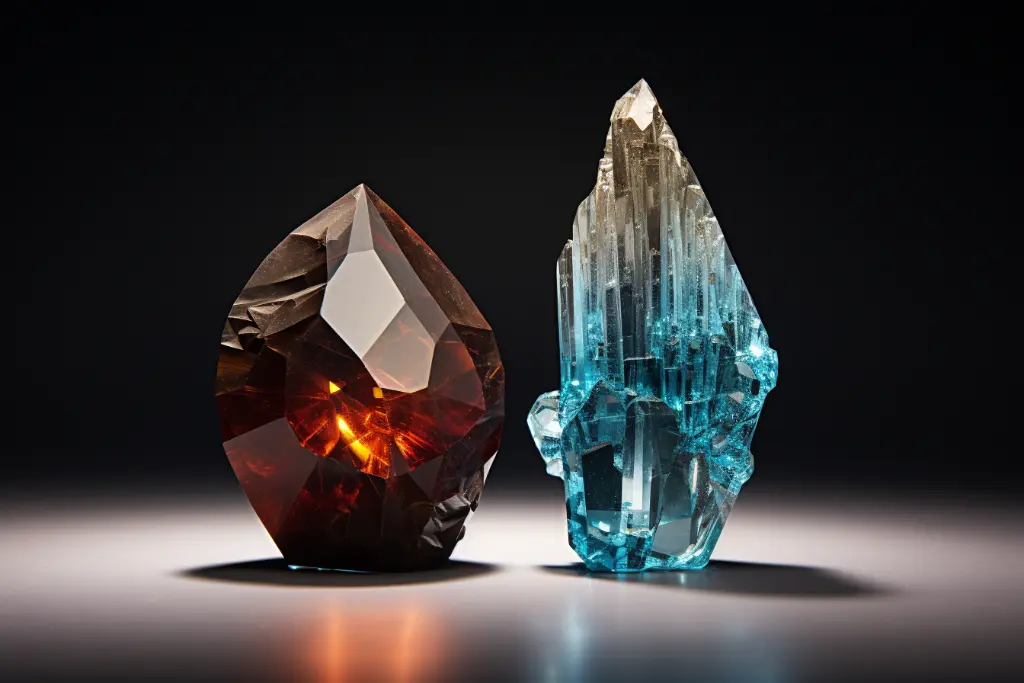
It comes in a range of colors from deep blue to pink and yellow hues, making it a versatile option for jewelry pieces. Other gemstones that rank high on the hardness scale include ruby (9), spinel (8), zircon (7.5-8), and garnet (6.5-7.5).
Each of these gems has its unique beauty and properties that make them desirable options for any jewelry lover. When considering hardier gemstones like these on the Mohs Scale, you can appreciate how they balance beauty with functionality — they’re gorgeous but also tough enough to wear daily without showing too much wear and tear over time.
Another desirable quality of hardy gemstones is that they tend to be more resistant to damage compared to softer ones like moss agate or carnelian which lie at the low end of the Mohs scale at only 6 – 7 respectively. These softer stones can easily get scratched or damaged if not taken care of properly over time, so limiting their daily wear may be best.
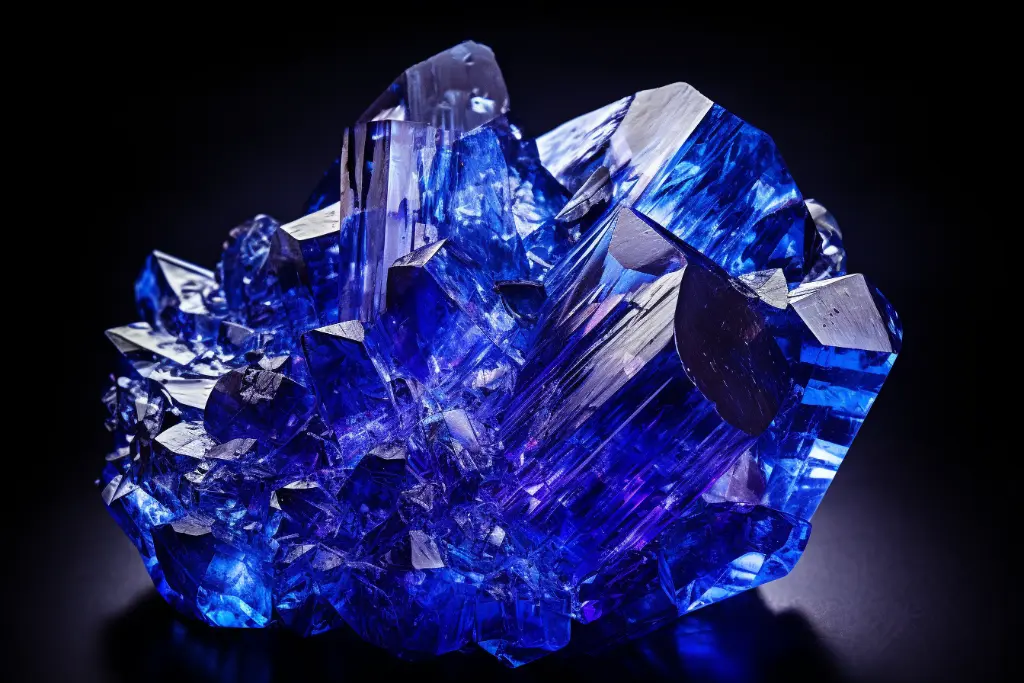
Zircon at 7/5 -8 ranks higher than these but still has its limitations when it comes to durability compared to some other harder gems like sapphire or diamonds. Overall, the hardest gems offer unyielding elegance and longevity to any jewelry collection.
Comparing Gemstones on the Mohs Scale: Hardness Showdown
When comparing gemstones on the Mohs scale of hardness, it’s helpful to understand where they fall in relation to each other. At the low end of the scale are gemstones like amber and carnelian, which have a rating of 2-3. These stones are beautiful but require extra care due to their vulnerability to scratches and damage.
For those looking for more durability without sacrificing beauty, stones like tourmaline and hematite (5-6 on the Mohs scale) strike a good balance. Moving up the scale, jadeite and peridot (6.5-7 on Mohs) offer even more resilience along with stunning colors and unique characteristics.
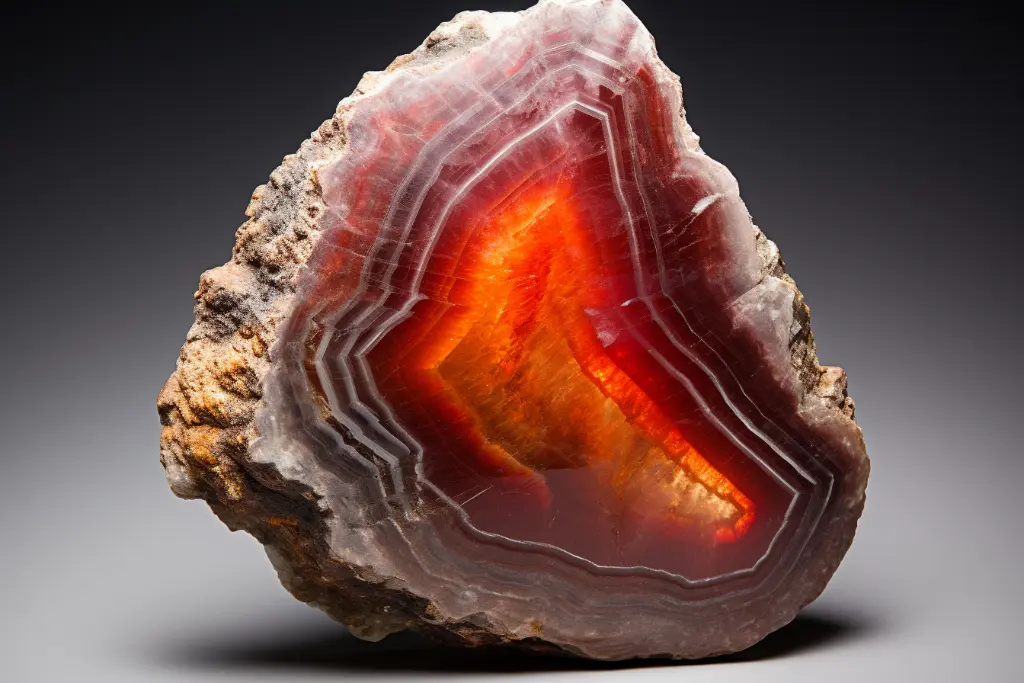
In terms of toughness, it’s hard to beat a sapphire (9 on Mohs), which is highly scratch-resistant and durable enough for everyday wear. Emeralds are also prized for their beauty; however, they only rate 7.5-8 on the scale and can be more prone to chipping or cracking than harder gems like sapphires or diamonds.
It’s important to note that while gemstone hardness is an important factor in choosing jewelry, it’s not necessarily the only one that matters. Some stones like moss agate or labradorite may have lower ratings but still, be beloved for their unique appearance or cultural significance.
Additionally, while some gems may hold up well under daily wear and tear, others may require special attention when cleaning or storing them in order to prevent damage over time. By taking into account both durability and personal preference when selecting gemstone jewelry, you can ensure that your pieces will bring joy for years to come.
Gemstone Hardness and Jewelry Selection: Practical Considerations
When it comes to selecting gemstones for jewelry, it’s important to consider their hardness on the Mohs scale. Gemstones with a low rating on the scale, such as amber or carnelian, may not be suitable for everyday wear because they are soft and can easily get scratched or damaged. On the other hand, gemstones with a higher rating like sapphire or diamond are more durable and can withstand daily wear without showing any signs of damage.
Another important practical consideration when selecting gemstones for jewelry is the type of setting used. Certain settings may protect delicate stones better than others.
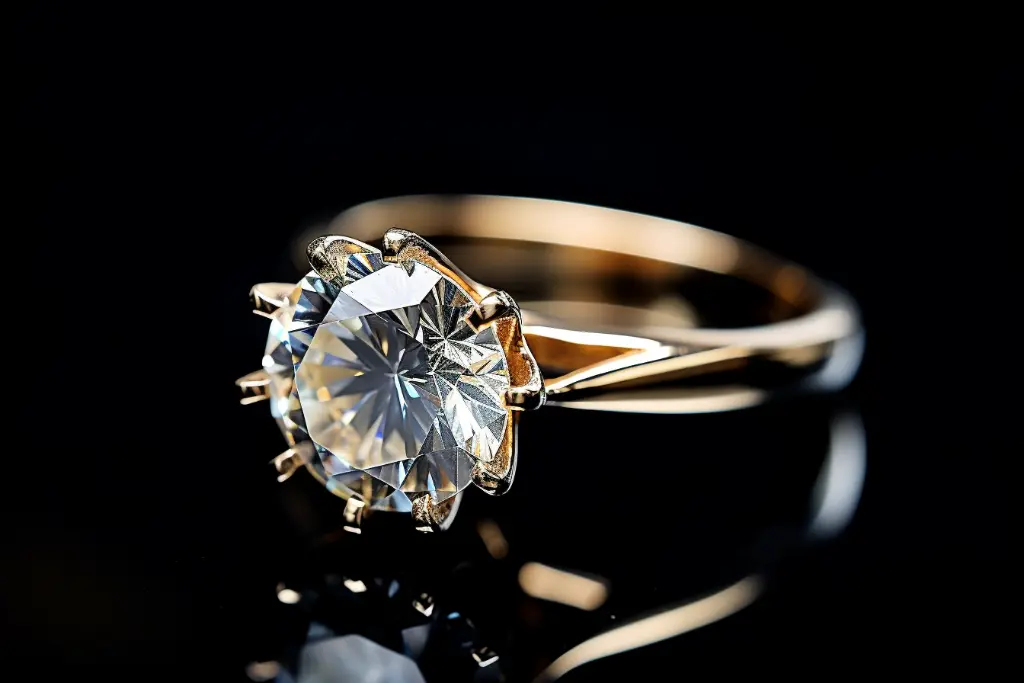
For example, prong settings are best for securing harder stones like diamonds or morganite that have a higher rating on the Mohs scale of hardness. On the other hand, bezel settings can provide better protection for softer stones like moonstone or labradorite that are more prone to scratches and chips.
By considering both the durability of a gemstone and its setting when selecting jewelry pieces, you can ensure that your favorite pieces last longer and look just as stunning years down the line as they did on day one. So next time you’re shopping for new jewelry pieces, remember to take into account both practical considerations such as hardness on the Mohs scale and personal preferences to make informed choices that will keep you looking fabulous!
Caring for Soft Gemstones: Protecting Delicate Treasures
Soft gemstones can be some of the most beautiful, but they also require special care to avoid damage. Stones like amber and moss agate have a low rating on the Mohs scale of hardness, which means they are easily scratched or chipped.
To protect these delicate treasures, it’s best to store them separately from harder gemstones in a padded jewelry box or cloth pouch. Avoid wearing soft stones during activities that could result in physical impact or abrasion, such as gardening or exercise.
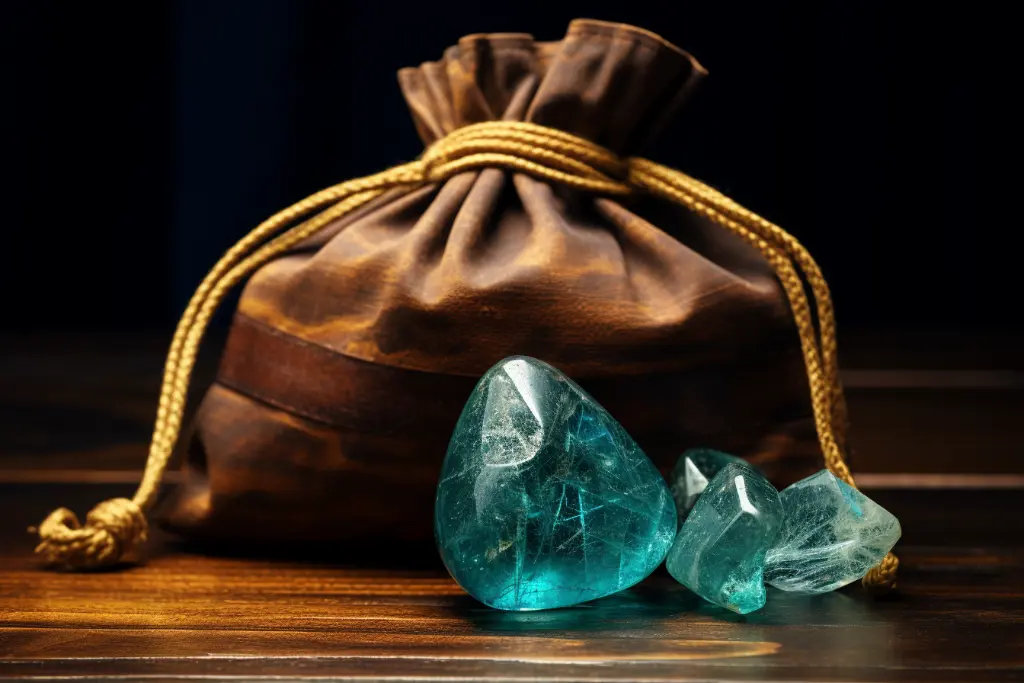
When cleaning soft gemstones, use mild soap and water and avoid using harsh chemicals or ultrasonic cleaners. A soft-bristled toothbrush can be used to scrub away dirt or grime gently, but take care not to apply too much pressure as this could scratch the stone’s surface.
Remember that soft stones may accumulate wear over time and develop scratches or chips even with proper care. However, this is simply part of their natural beauty and can add character to your jewelry piece over time.
Maintaining Moderate Hardness Gemstones: Preserving Beauty and Resilience
To maintain the moderate hardness of gemstones like amber, kunzite, and jasper, it is important to take proper care of them. These gemstones have a moderate level of durability on the Mohs scale and can be scratched or damaged if not handled with care. Avoid exposing these gemstones to harsh chemicals or extreme temperatures to prevent damage.
For example, if you have a kunzite gemstone, avoid cleaning it with harsh detergents or exposing it to high temperatures as this can cause discoloration and damage. When cleaning your moderate hardness gemstones like moss agate and moonstone, use mild soap and water instead of abrasive cleaners that could scratch or dull the surface of the stone.
Additionally, store your gems in a soft pouch or jewelry box to protect them from scratches when not in use. If you’re interested in testing the hardness of your gems regularly to see if they are getting scratched over time, you can purchase a Mohs hardness scale test kit online that allows you to test different gems at home.
It is also important to note that some moderate hardness gemstones like emeralds on the Mohs scale may require more frequent cleaning and maintenance due to their tendency towards scratches. However, with proper care such as avoiding exposure to high heat sources or sharp objects and storing them carefully when not in use, these stunning gems will continue shining for years without losing their luster.
Hard Gemstones: Resilient Beauty
When it comes to gemstones, some people prefer those that are hard and resilient. These gems can withstand daily wear and tear, which makes them ideal for engagement rings or frequently worn jewelry.
Hard gemstones on the Mohs scale are those that fall within the 7 to 10 range. Among them are sapphires, alexandrite, and emeralds.
Sapphires are a popular choice for engagement rings due to their durability and their range of colors including blue, pink, yellow, green, and even orange. They score a 9 on the Mohs scale of hardness and only diamonds measure higher at a perfect 10.
Alexandrite is another hard gemstone with excellent color-changing properties in different lighting conditions. It ranks an 8.5 on the Mohs scale and is known for its durability which is ideal for everyday wear jewelry like pendants or earrings.
Emeralds may not be as hard as sapphires or alexandrite but they still rank between 7-8 on the Mohs scale making them durable enough for jewelry pieces that need to withstand daily use like bracelets or necklaces. Other examples of hard gemstones include carnelian a rating of seven on Moh’s hardness scale as well as tsavorite garnet an impressive level of seven-and-a-half rating which adds more toughness than many other green stones display in this category; while gemstones like hematite or jasper score lower along the low end of the Mohs scale but still contribute to unique fashion pieces due to their striking appearance despite being softer materials than many other options out there.
Gemstones with Unique Hardness Characteristics: Uncovering the Unusual
Gemstones with unique hardness characteristics can range from surprisingly fragile to impressively durable. Some gemstones may have a hardness that is lower than what you would expect given their other characteristics, like obsidian, which only ranks around 5 on the Mohs scale of hardness.
Obsidian is a volcanic glass formed from lava that cools too quickly for crystals to form. It can be used for decorative purposes and jewelry, but it requires careful handling due to its relatively low hardness.
Another example of a surprising gem on the Mohs scale is amber, which ranges between 2 and 2.5 depending on the impurities present. Amber is fossilized tree resin and has been used for thousands of years as adornment or talisman.
On the other end of the spectrum, some gemstones are exceptionally hard and durable. One example is sapphire, which ranks at a solid 9 on the Mohs scale of hardness.
Sapphire comes in many colors beyond blue, including pink, yellow, orange, and green, and serves as an excellent option for daily wear jewelry items like engagement rings or wedding bands due to its durability. Another tough gemstone is jadeite jade; it has long been prized in China for its toughness and beauty and ranks around 6-7 on the Mohs scale depending on quality – making it one of the toughest gems available in nature.
Gemstone Hardness and Symbolism: Resilience and Meaning
Gemstones have been used for centuries for their beauty and symbolism. Many cultures believe that gemstones have healing properties, and some even believe that they can help with personal growth and transformation. Gemstones with a higher hardness on the Mohs scale are often associated with resilience and strength.
One gemstone that is known for its strength is jade, which ranks between 6-7 on the Mohs scale. Jade has been used for centuries in Chinese culture as a symbol of purity, courage, and wisdom.
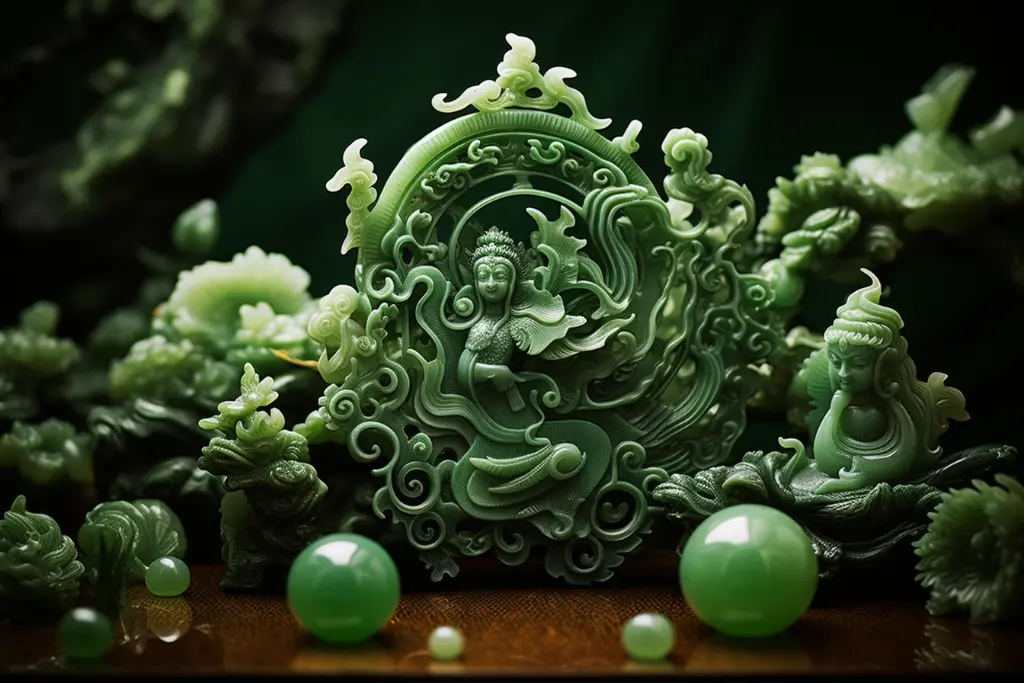
It was believed to protect its wearer from harm and to bring good luck. Its durability has also made it a popular choice for jewelry that can be passed down through generations.
On the other end of the spectrum, gemstones like opal (5-6 on the Mohs scale) and amber (2-2.5 on the Mohs scale) are considered softer stones that require more care when handling. However, they still hold great value in many cultures due to their unique beauty and symbolism.
Opals are said to represent hope, purity, and love while amber is associated with warmth, happiness, and healing. Gemstones like zircon (7.5 on the Mohs scale) and tsavorite (7-7.5 on the Mohs scale) fall in the middle range of hardness but are still known for their resilience and durability compared to softer stones such as moss agate or blue sandstone which rate around 6-7 on the low end of the Mohs scale.
Labradorite is another versatile stone that rates between 6-6.5 but has a unique iridescence effect when viewed from different angles. Overall, understanding a gemstone’s hardness can help you choose jewelry based not only on its beauty but also on its practicality in everyday wear or special occasions alike – especially if you’re buying an engagement ring or other long-lasting piece – as well as its symbolic meaning.
Rare Gemstones with Surprising Hardness: Hidden Treasures
While some gemstones are known for their unmatched hardness, others surprise us with their impressive resistance. These rare gemstones offer both beauty and durability, making them hidden treasures for jewelry enthusiasts.
Emeralds are often thought of as soft gemstones due to their reputation for being prone to scratches and damage. However, they rank 7.5-8 on the Mohs scale of hardness, making them quite resilient when compared to other green stones like peridot or tourmaline.
On the lower end of the scale, there are unexpected candidates like amber which has a Mohs hardness of just 2-2.5 but still manages to be used in jewelry pieces with great success. One intriguing example of a relatively hard gemstone is labradorite which ranks 6-6.5 on the Mohs scale.
Despite its impressive durability and spectacular iridescence, it is rarely seen in mainstream jewelry collections. Similarly, pyrite – also known as “fool’s gold” – ranks between 6 and 6.5 on the Mohs scale which makes it harder than most metals used in jewelry-making!
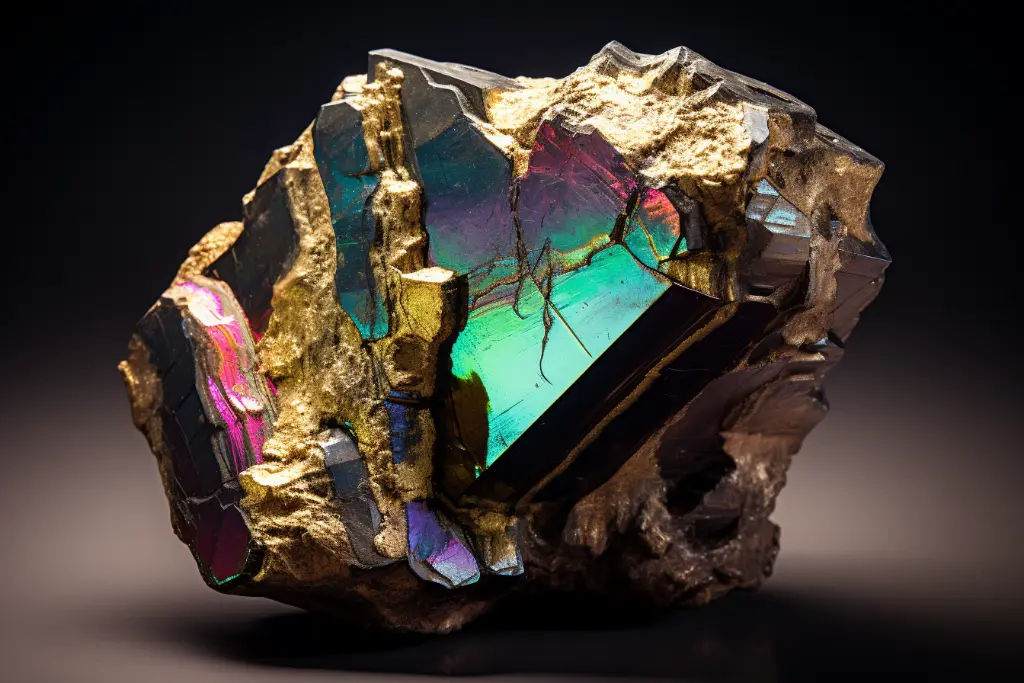
Alexandrite is another surprising entry on the Mohs hardness scale that rates at 8.5, making it one of the hardest gemstones not commonly associated with strength or resilience due to its delicate appearance and color change properties. Ultimately, these rare gems offer unique options for those seeking something special that can withstand everyday wear and tear without sacrificing the beauty or meaning behind it–and that’s what makes them hidden treasures worth exploring!
Gemstone Hardness in Historical Context: From Ancient to Modern Times
Gemstone hardness has a long and fascinating history. The concept of gemstone hardness was introduced by the ancient Greeks, who were among the first to recognize that some gemstones were more durable than others.
However, it wasn’t until the 19th century that a standardized system for measuring gemstone hardness was developed – the Mohs scale of hardness. This scale ranks minerals from 1 (softest) to 10 (hardest) based on their scratch resistance.
It’s a useful tool for jewelers and gemologists alike, as it allows them to assess the durability of different types of gemstones. Throughout history, different cultures have prized different gems for their beauty and symbolic significance.
For example, in ancient Egypt, carnelian was considered a powerful amulet that protected against evil spirits. In ancient Greece and Rome, emeralds were associated with Venus and believed to bring prosperity and fertility, while onyx was worn as an amulet against negativity.
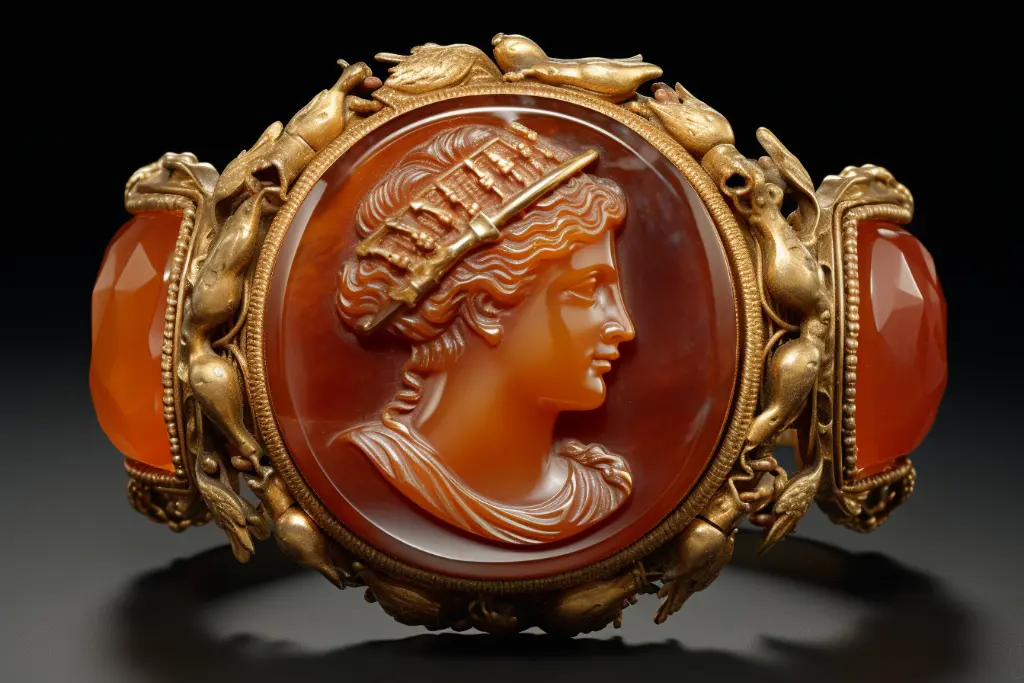
The Chinese valued jadeite above all other gems; they believed it possessed supernatural powers that could protect its owners from harm. Today we have access to an array of stones with varying levels of hardness such as moonstone Mohs scale six or jadeite Mohs scale six and a half which can be used beautifully in jewelry design due to their unique physical properties along with historical significance attached to them.
But while cultural beliefs about gemstones have changed over time, their physical properties have remained constant. For instance, pyrite mohs scale rates at 6-6.5 meaning it is relatively hard but not as tough as say moss agate mohs scale which is more resistant to scratches due to its composition of quartz mineral. The Mohs scale has allowed us to understand these properties better so we can appreciate them not only for their beauty but also their durability through time both historically and in modern jewelry design today using alexandrite hardness on Mohs scale eight and tourmaline Mohs scale seven.
Making Informed Choices: Personal Preference and Gemstone Durability
When it comes to choosing gemstones, personal preference is ultimately the deciding factor. Some people may prioritize durability and opt for gemstones on the higher end of the Mohs scale, while others may be drawn to the unique beauty of softer gemstones that require more careful handling. Ultimately, it’s important to select a gemstone that speaks to you and meets your needs.
For those who value durability but still want something with character and charm, there are plenty of options on the middle range of the Mohs scale. For example, labradorite has a hardness rating of 6-6.5 but its stunning iridescent effect can add a mesmerizing charm to any jewelry piece.
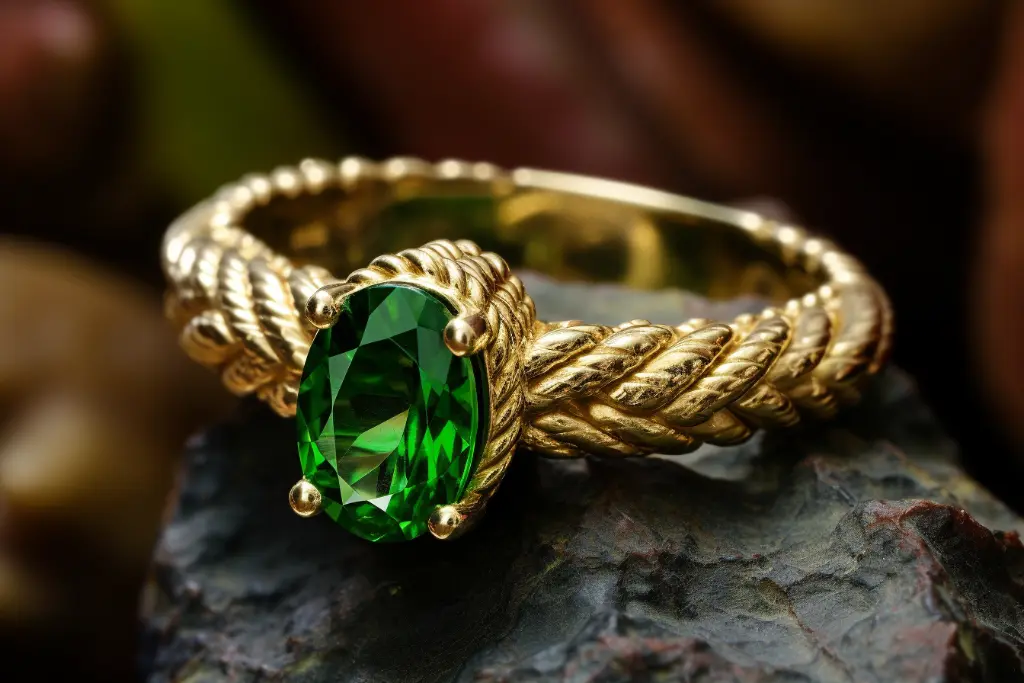
Similarly, my tsavorite garnet has a rating of 7-7.5 but its rich green color can provide an elegant touch while still being practical for daily wear. These types of stones offer both beauty and durability for those looking for something in between soft and hard.
On the other hand, if you’re someone who loves delicate gems despite their lower rankings on the Mohs scale such as moss agate or carnelian, there are ways to protect them from damage such as avoiding rough contact or storing them separately from harder gems. It’s all about finding what works best for you and how you plan to use your jewelry pieces to enjoy them for years to come regardless of where they fall on the Mohs Scale.
Conclusion
Understanding the gemstone’s durability can help you pick jewelry that will last a lifetime. The Mohs scale is an excellent tool to determine a gemstone’s hardness, allowing you to choose the ideal gemstone for your needs.
You may now have a deeper appreciation of the strength and resilience required for some of the humans’ most valuable possessions. The Mohs hardness scale isn’t just a tool of science, it’s also an art form.
Learning about each stone’s unique properties allows us to explore our deep connection with nature and treasure our individuality. Whether you’re purchasing jewelry as an investment or as an expression of your personality, taking the time to learn about gemstones on the Mohs scale enables you to make informed decisions about your purchase.
Understanding the Mohs scale can provide insight into how durable different types of stones are because this information plays a vital role in selecting gems that will withstand daily wear and tear without losing their luster or elegance. It is fascinating how different factors such as chemistry and crystal structure influence each stone’s strength and durability differently on the Mohs hardness scale test kit.
By learning more about the amber Mohs scale, carnelian Mohs scale, alexandrite hardness Mohs scale, kunzite Mohs scale, jasper Mohs scale, onyx Mohs scale, labradorite Mohs scale among others we can begin to appreciate each stone from its unique perspective. So go ahead; explore the beauty and magic of gemstones!
